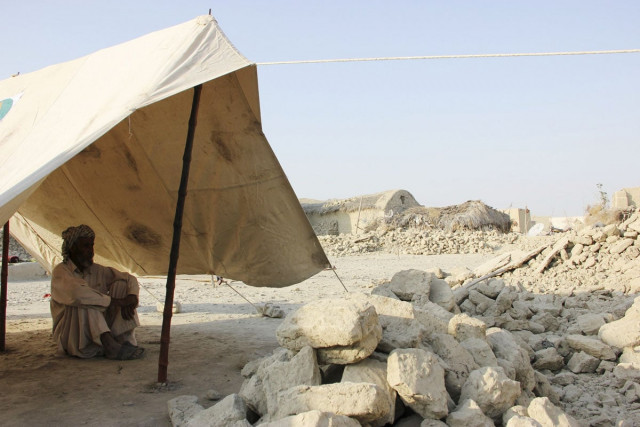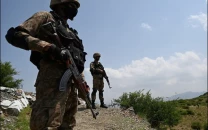Severe drought afflicts Balochistan, says minister
Experts warn of food shortage if the dry spell is not taken seriously

A provincial minister has warned of a severe drought in Balochistan due to a prolonged dry spell. Mir Sarfraz Bugti, the minister for home, tribal affairs and Provincial Disaster Management Authority (PDMA) in the Balochistan cabinet, told The Express Tribune that his province has been facing a severe drought due to little rain-falls and snow-falls this winter season.
Most of the deputy commissioners have informed the PDMA in their reports about the drought in their respective districts. Another senior official of the PDMA said the National Weather Forecasting Center of the Pakistan Meteorological Department has also endorsed these reports.
Bugti said his department has already started preparations to handle the situation, though he refused to share details of the preparations. “We have informed Chief Minister [Dr Abdul Malik Baloch] about the possible repercussions of the drought. The PDMA has also issued emergency warnings to all provincial departments, including agriculture, irrigation and food, regarding arrangements to tackle the situation,” he added.
An official of the provincial agriculture department, who has received the said warning, told The Express Tribune that the drought has severely affected the rain-fed districts of Balochistan. More than 80% districts are rain-fed in the province. Agriculture being the backbone of the provincial economy provides employment to over 60% of its population.
Tube-well based agriculture was already suffering due to scarcity of irrigation water as a result of inadequate electricity. Wheat growers in three districts, namely Nasirabad, Jaffarabad and Jhal Magsi, where more than 1,000 square miles of farmland is canal irrigated, are already facing a lack of fertiliser that has been restricted by the law enforcement agencies.
Misuse of Urea by terrorists who use it for bomb-making forced the paramilitary Frontier Corps to ban its supply in Balochistan since long. Even without fertiliser, the per hectare yield in the rain-fed areas here is the highest in the country, according to experts who claim that the annual wheat production in Balochistan is about 300,000 tons.
Balochistan has already been facing a drought-like situation due to the excessive use of tube-wells for agriculture for the past several years, the agriculture department official added. “Underground water table has touched the lowest ebb due to the excessive use of tube-wells,” he said.
Deforestation and rising environmental pollution has been another reason for the situation, Adviser to Chief Minister on Forest and Livestock Ubaidullah Jan Babat had noted in June. He emphasised the need to construct more dams in the province to preserve rain water and put a halt to the damage caused by flashfloods.
According to the PDMA, being an arid region with occasional rainfall, Balochistan has a history of droughts, but the recent droughts (1997-2002) were the longest dry spells in many years. The districts of Kalat, Chaghi, Naukundi and Zhob were severely affected by droughts. The monthly average rain in the dry region is between 2 and 25 mm, which is very low as compared to other parts of the country. A famine like situation developed during 1997 to 2002 due to lack of rains in the entire province. It was termed as one of the worst in the history of Balochistan that caused slowing the economic growth rate to 2.6 per cent during that period. According to the figures released by the finance ministry, drought caused a loss of Rs25 billion to the national exchequer in 2000-2002, concluded the PDMA.
Published in The Express Tribune, December 28th, 2014.



















COMMENTS
Comments are moderated and generally will be posted if they are on-topic and not abusive.
For more information, please see our Comments FAQ